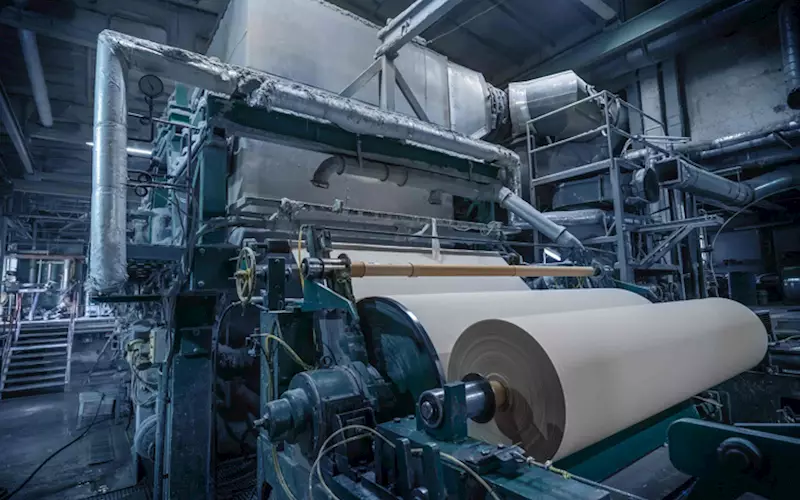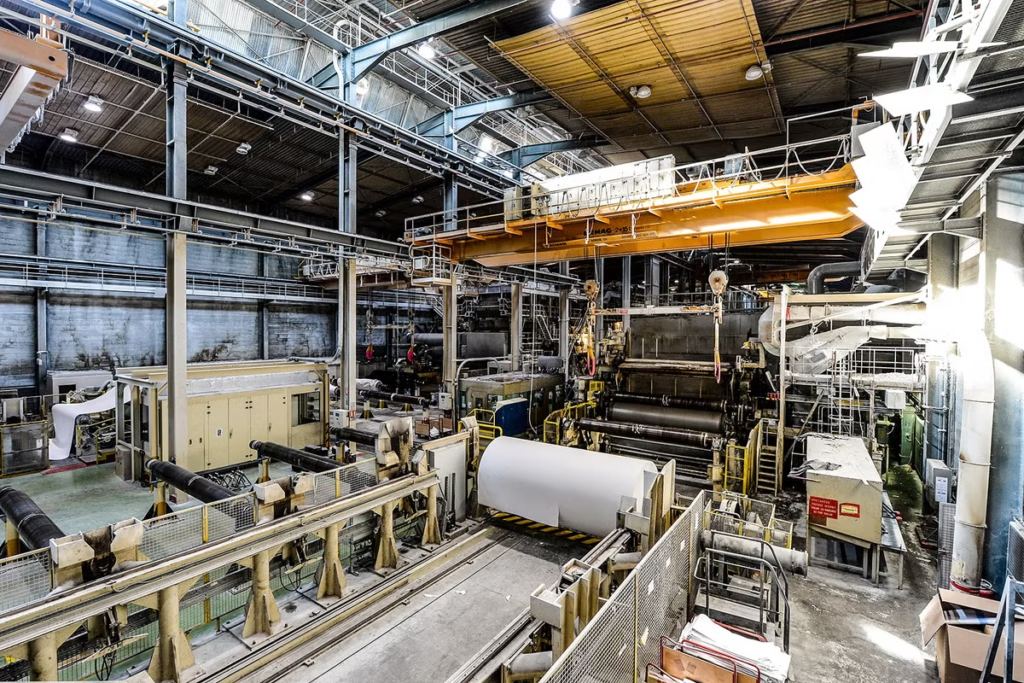The US paper industry is a vital contributor to the global market, known for its innovation, sustainable practices, and high-quality production.

US Paper Industry , US Paper Market .
The U.S. paper industry is a cornerstone of the nation’s manufacturing industry and a major contributor to economic growth, jobs and trade. US Paper Industry . With a history dating back to the 17th century, the U.S. paper industry has evolved due to technological advances, changing consumer demands and the rise of sustainability practices. US Paper Industry .
The paper industry in the United States began in the early 1690s when the first paper mill was established in Philadelphia, Pennsylvania. By the 19th century, the introduction of the Fourdrinier machine revolutionized paper production, enabling mass production and the rise of the industry as a key player in global markets. Key Historical Milestones:
Industrialization in the 19th Century: The advent of mechanical and chemical pulping methods increased production efficiency.
US Paper Market
Expansion in the 20th Century: The paper industry grew due to developments in print media, packaging, and office supplies. Late 20th century: Digitalization and environmental regulations began to change the industry. US Paper Industry .
The U.S. paper industry remains one of the largest in the world, and her contributions span multiple sectors including packaging, printing and textiles. This industry is divided into the following major segments:
Pulp Production: The process of converting raw materials such as wood chips into pulp is fundamental to the paper industry. The United States is a major producer of both hardwood and softwood pulp. Paper: Products range from printing and writing papers to speciality papers for industrial applications.
Packaging materials: This sector has been the most active in recent years due to the demand for sustainable and recyclable packaging. Toilet Paper Products: Products such as toilet paper, paper towels, and tissues are essential household items. US Paper Industry .

The paper industry makes a significant contribution to the U.S. economy:
Employment: The sector employs about 150,000 workers, from mill operators to logistics specialists.
Revenue: The industry brings in more than $170 billion annually, with much of it coming from exports. Export: The main export markets include Canada, Mexico, China, and European Union, and includes products such as pasted products and finished paper.
Prominent companies in the U.S. paper industry include:
International Paper: A global leader in pulp and paper production, specializing in packaging and cellulose fibers.
WestRock: Known for its innovative packaging solutions and commitment to sustainability.
Georgia-Pacific: A major producer of tissue, pulp, paper, and packaging.
Domtar: Focused on communication papers, specialty products, and personal care items. Packaging Corporation of America (PCA): Specializes in containerboard and corrugated packaging.
The primary raw materials for the paper industry are:
Wood fiber: Derived from hardwood and softwood trees, wood fiber is the basis for paper production.
Recycled paper: Recycling has become a critical element, with about 66% of paper consumed in the United States being returned for recycling. Water and chemicals: used in shaving, whitening and paper manufacturing processes. US Paper Industry .
The practice of sustainability has led to an increase in the use of processed materials and more efficient management of resources.
The U.S. paper industry has embraced technological advancements to enhance productivity, reduce costs, and meet environmental standards:
Automation and AI: Smart manufacturing systems optimize production efficiency and minimize waste.
Energy-Efficient Technologies: Modern mills utilize renewable energy sources and energy-efficient machinery. Digital Printing: The growth of digital printing technology has expanded the specialty paper market. US Paper Industry .
Sustainability is a top priority for the paper industry:
Recycling Initiatives: The United States is a leader in paper recycling, with a recovery rate of over 65%.
Forest Management: Sustainable forestry practices ensure a balance between timber harvesting and reforestation. Energy efficiency: Many plants have switched to renewable energy sources, including biomass. US Paper Industry .
Waste management: Efforts to reduce waste going to landfill include innovations in the use of by-products.
The U.S. paper industry faces a number of challenges:
Digital Substitution: The rise of digital media has reduced demand for traditional paper for printing and writing.
Global Competition: Imports from countries with lower production costs pose a threat to domestic producers. Environmental regulations: Stricter regulations on emissions and waste disposal increase operating costs.
Supply chain issues: Fluctuations in raw material availability and transportation disruptions affect profitability.
Despite the challenges, the U.S. paper industry has room to grow.
Sustainable packaging: Increased consumer awareness is driving demand for sustainable packaging.
Biodegradable products: Development of compostable and biodegradable paper products. Advanced Recycling Technologies: Innovations in recycling technologies improve efficiency and product quality. US Paper Industry .
Digital Integration: Leverage data analytics and AI for smarter operations.
The U.S. paper industry is one of the nation’s largest manufacturing players, with a strong heritage and an important role in global trade. This dynamic industry spans the paper, pulp, and packaging industries, serving critical functions in the publishing, packaging, and consumer products sectors. Over the decades, the industry has evolved in response to technological advances, environmental regulations and changing consumer demands – and as a result, it remains a resilient and innovative sector that combines traditional practices with modern sustainability initiatives.
In recent years, the industry has shifted towards environmentally friendly practices and renewable resources to meet global environmental standards. Recyclable packaging materials have seen high demand due to increased environmental awareness and changes in consumer behavior. Despite facing challenges such as competition from international markets and the digitalization of information, the U.S. paper industry continues to adapt and innovate. Cutting-edge technology and a commitment to sustainability position the industry to effectively meet future demands.
The US paper industry is a cornerstone of the economy, generating more than $170 billion in annual revenue and directly employing approximately 150,000 people. It is characterized by its diverse segments, including paper manufacturing, pulp production, tissue products and packaging solutions. US Paper Market . Among these, the packaging sector is experiencing the strongest growth due to the rise of e-commerce and the growing need for sustainable packaging solutions. US Paper Industry .
The majority of the industry’s production is for export, making the United States one of the leading suppliers of pulp and paper to international markets. Canada, Mexico and China are among the largest importers of paper products from the United States. US Paper Market . In addition, industry investments in advanced manufacturing technologies and automation have improved production efficiency and cost management. A focus on innovation will help the United States maintain its competitive advantage in the global economy while contributing to job creation and regional development at home.
Sustainability has become a cornerstone of the U.S. paper industry’s operating philosophy. Incorporating environmentally friendly practices such as recycling and sustainable forestry ensures long-term availability of raw materials with minimal environmental impact. The industry’s recycling initiatives are particularly noteworthy: more than 65% of the paper consumed in the U.S. is recovered and recycled each year. This high recovery rate underscores the industry’s commitment to the principles of a circular economy. US Paper Market .

But the sector also faces challenges that threaten its growth and sustainability: Tightening environmental regulations require significant investments in clean energy technologies and waste management systems, increasing operational costs. US Paper Market . In addition, competition from international manufacturers with lower production costs and reduced demand for traditional printing paper due to digitalization add to the pressure. Despite these challenges, the industry’s focus on innovation and sustainability continues to drive its development, enabling it to navigate a challenging economic and environmental environment.
Technological advancements are reshaping the U.S. paper industry, fostering innovation and efficiency. Automation and artificial intelligence are increasingly used in mills to optimize production processes, reduce waste, and improve resource utilization. US Paper Market .These technologies not only reduce operational costs, but also improve the quality and consistency of the product. Furthermore, the results of the digital printing field have opened new markets for special documents, such as those used in packaging and marking.
The future of the industry is also being shaped by the growing demand for biodegradable and compostable products. The rise of e-commerce and food delivery services has increased interest in sustainable packaging solutions, providing significant growth opportunities. US Paper Market . Additionally, ongoing research into alternative raw materials such as agricultural residues and non-wood fibers promises to diversify resource supplies and further improve sustainability. US Paper Market . By embracing these trends, the U.S. paper industry is poised to remain an important part of the global manufacturing ecosystem.
The U.S. paper industry is an example of resilience and adaptability in the face of changing market dynamics and environmental challenges. US Paper Market . With a rich history and significant economic impact, the company continues to innovate and be a leader in sustainable development.
The industry’s commitment to recycling, renewable energy and technological advances underscores its drive to meet future needs. Despite challenges such as global competition and digital transformation, the U.S. paper industry remains a significant player in domestic and international markets. US Paper Market .As we progress towards a more sustainable, technology-driven future, the industry’s role in shaping trade and environmental stewardship will undoubtedly increase, cementing its position as an essential part of modern society.
The U.S. paper industry has long been a cornerstone of the country’s industrial sector, playing a key role in manufacturing, commerce and sustainability. US Paper Market .Over the centuries, the industry has evolved from traditional paper mills to a center of innovation and environmentally friendly production. The relevance of the paper industry lies in its diverse products such as packaging, textiles, speciality papers etc., serving various domestic and global markets. This adaptability, coupled with the industry’s commitment to sustainability, plays a key role in addressing today’s challenges and opportunities.
Modern shifts in consumer behavior, particularly the preference for eco-friendly packaging, have driven significant growth within the industry. US Paper Market . As e-commerce flourishes, the demand for recyclable and biodegradable materials has surged, making the U.S. a leader in sustainable packaging solutions. In addition, the progress of digital technology has promoted the growth of niche markets, such as digital printing paper, and the industry has expanded. The permanent success in the paper industry is the ability to balance innovative products that match the conventional market and emerging trends.



